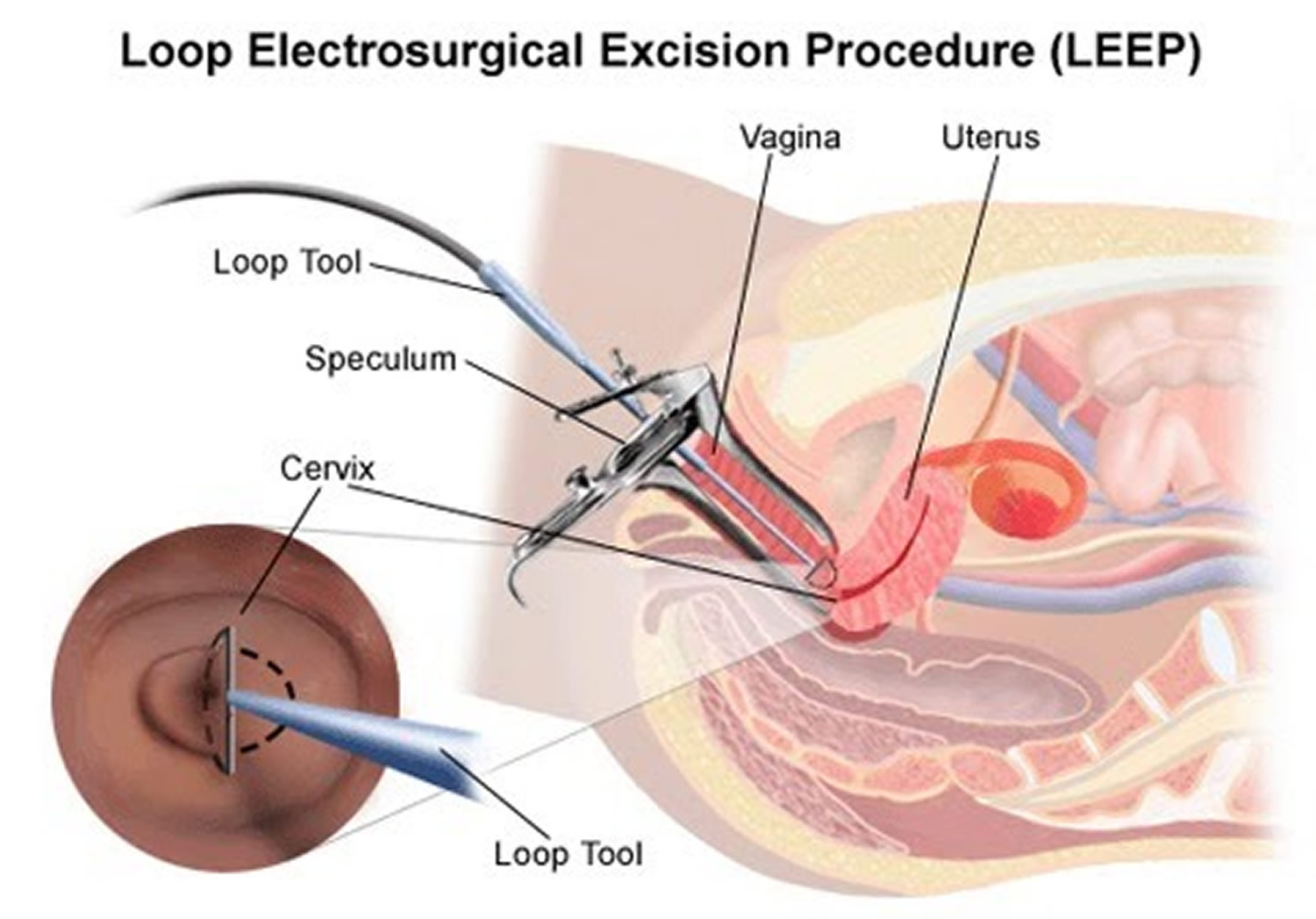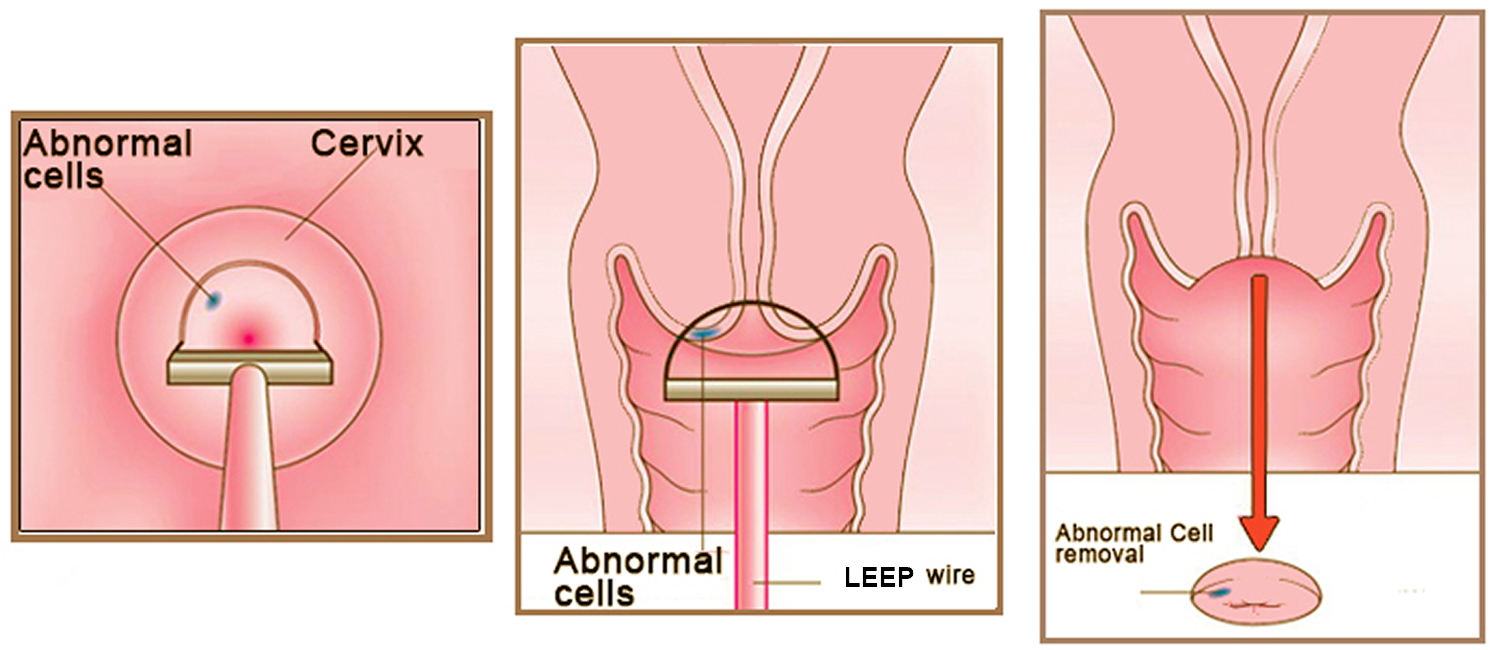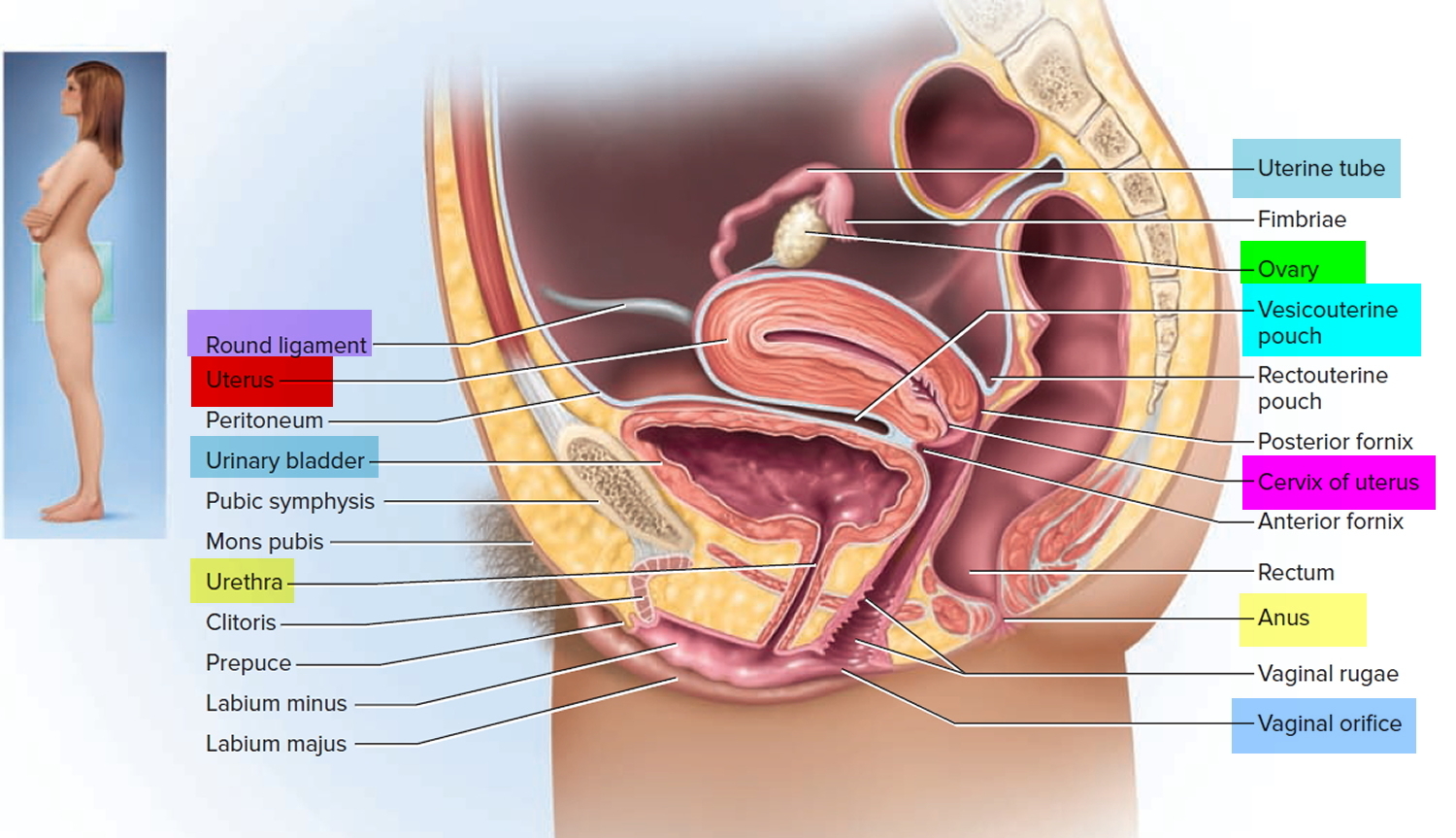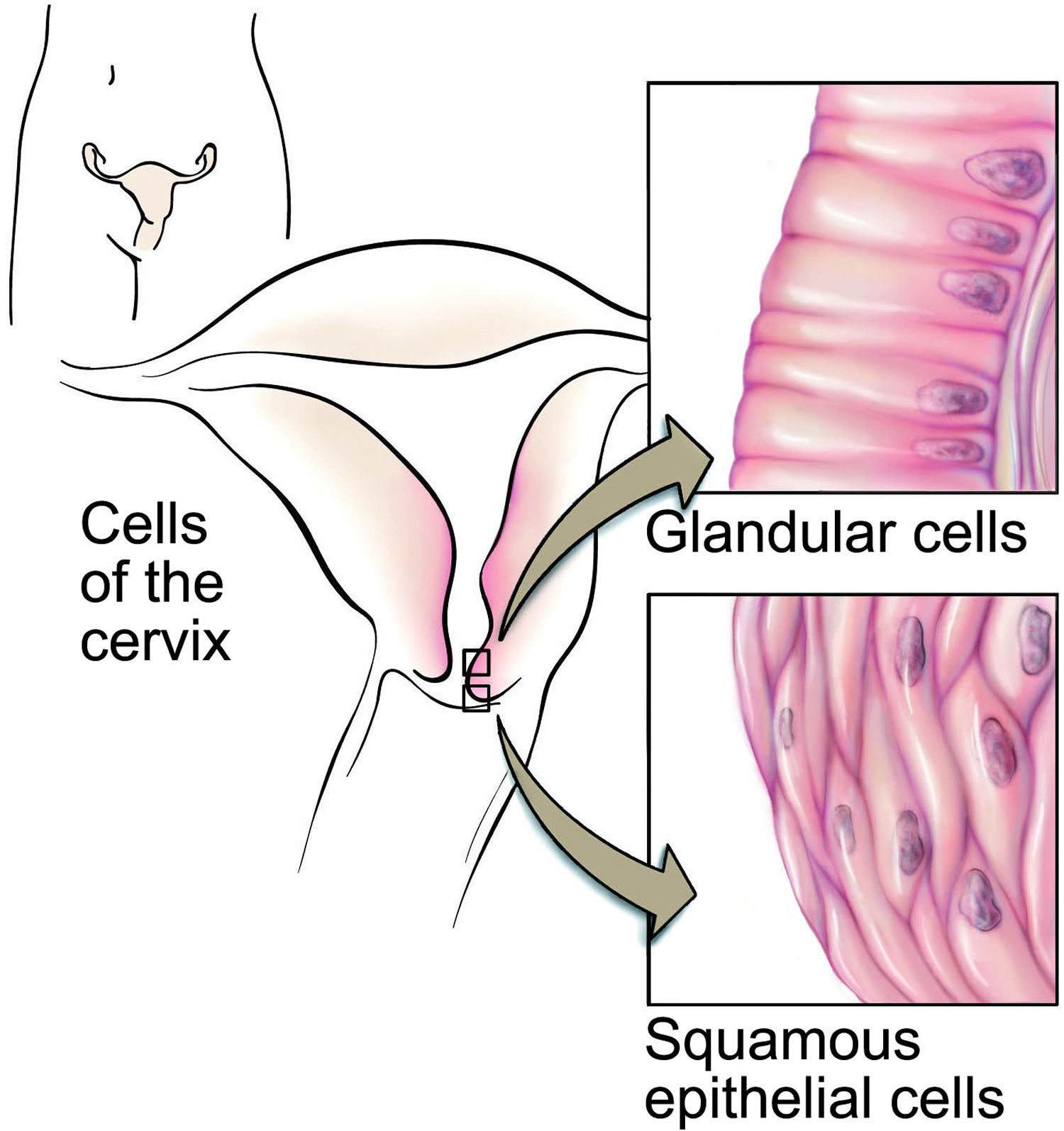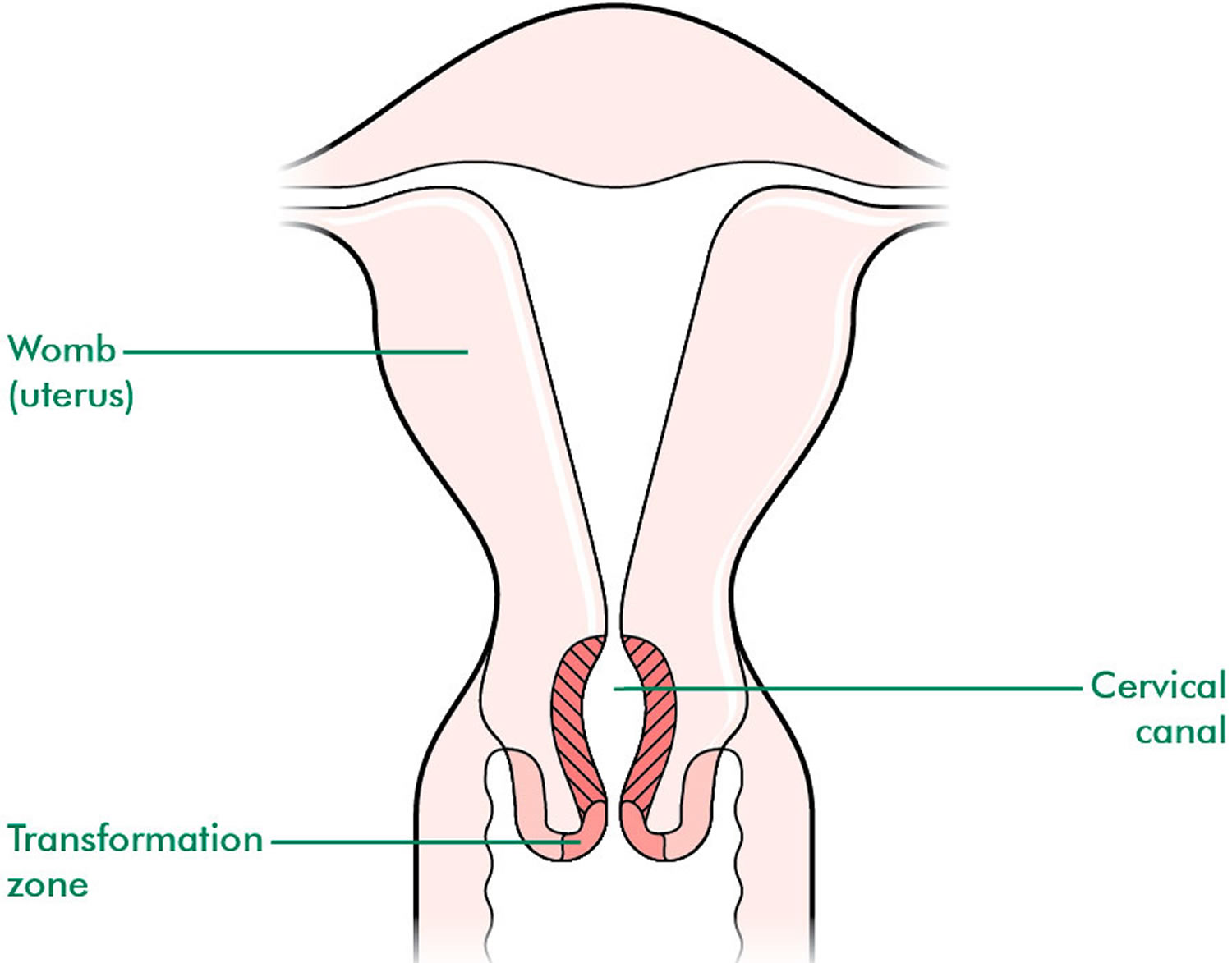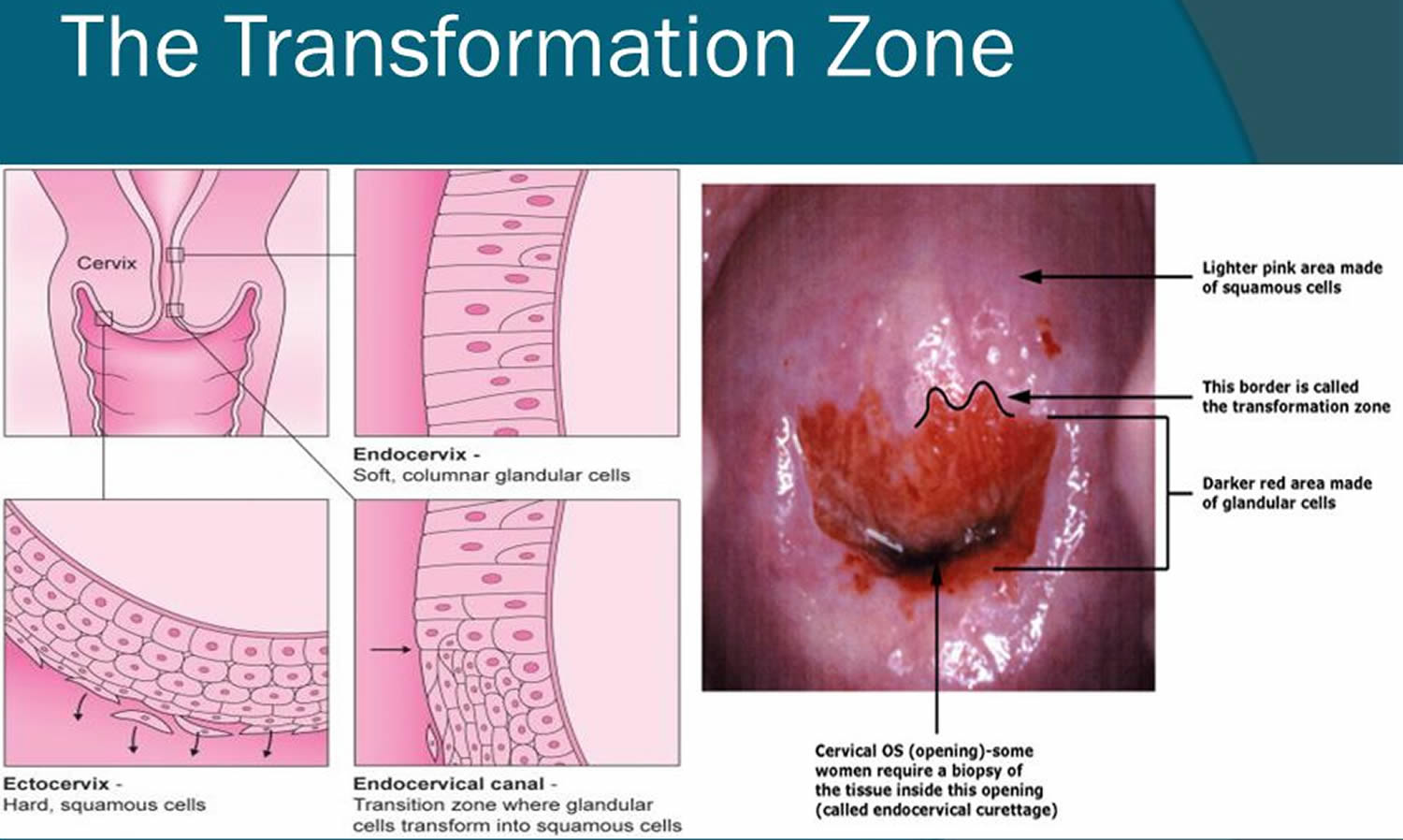Contents
What is a LEEP procedure
LEEP is short for Loop Electrosurgical Excisional Procedure (LEEP) and it is also called large loop excision of the transformation zone (LLETZ). LEEP (loop electrosurgical excision procedure) is the preferred method of diagnosis and treatment of high-grade cervical intraepithelial neoplasia (CIN). LEEP (loop electrosurgical excisional procedure) is one way to remove abnormal cells from the cervix by using a thin wire loop that acts like a scalpel (surgical knife). An electric current is passed through a wire loop electrode on the end of an insulated handle, which cuts away a thin layer of the cervix. The current is designed to achieve a cutting and coagulation effect simultaneously. Power should be sufficient to excise tissue without causing a thermal artefact. The procedure can be performed under local analgesia.
LEEP is often preferred over a cold knife cone since it affords less blood loss, is performed more quickly, and can be done in an office setting 1. Treatment success of LEEP is reported as 98% 2, 96% 3, 96% 4, 95% 5, 91% 6 and 94% 7 in non-randomized studies.
Cervical intraepithelial neoplasia (CIN) is the most common pre-malignant lesion 8. Atypical squamous changes occur in the transformation zone of the cervix with mild, moderate or severe changes described by their depth (CIN 1, 2 or 3). If cervical intraepithelial neoplasia (CIN) progresses it develops into squamous cell cancer. In contrast, the much rarer glandular pre-cancerous abnormalities (cervical glandular intraepithelial neoplasia or CGIN) becomes cervical adenocarcinoma. Cervical intraepithelial neoplasia (CIN) is treated by local ablation or lower morbidity excision techniques. Choice of treatment depends on the grade and extent of the disease.
Current treatment for cervical intraepithelial neoplasia (CIN) is by local ablative therapy (i.e., cryotherapy or laser ablation and laser conization) or by excisional methods (i.e., loop electrosurgical excision procedure [LEEP] or cold knife conization), depending on the nature and extent of disease 9. Excisional methods offer advantages over destructive methods in that they can define the exact nature of disease and the completeness of excision or destruction of the transformation zone. Incomplete excision or destruction of the transformation zone is an important indicator of patients at risk of treatment failure or recurrence of disease. Traditionally, prior to colposcopy (procedure in which a lighted, magnifying instrument called a colposcope (similar to a microscope) to closely examine your cervix, vagina and vulva for signs of disease), all lesions were treated by knife excisional cone biopsy or by ablative radical point diathermy. Knife cone biopsy and radical point diathermy are usually performed under general anesthesia and are no longer the preferred treatment as various more conservative local ablative and excisional therapies can be performed in an out-patient setting.
Patients are suitable for ablative therapy provided that:
- The entire transformation zone can be visualized (satisfactory colposcopy);
- There is no suggestion of micro-invasive or invasive disease;
- There is no suspicion of glandular disease;
- The cytology and histology correspond.
Excisional treatment is mandatory for a patient with an unsatisfactory colposcopy, suspicion of invasion or glandular abnormality. There is now a trend to utilize low morbidity excisional methods, either laser conization or loop electrosurgical excisional procedure (LEEP) in the USA or large loop excision of the transformation zone (LLETZ) in the UK, in place of destructive ablative methods. LEEP and cold knife conization allow histologic review of the excised tissue, whereas ablative techniques (i.e., cryotherapy or laser ablation and laser conization) destroy the transformation zone, precluding histologic evaluation 10. LEEP excises the cervical transformation zone and a small amount of stroma 11. Compared with cold knife conization, LEEP can be performed in the office under local anesthesia and removes less tissue 12. Because LEEP can cause cautery artifact at the margins, cold knife conization is preferable when margin status is critical for determining residual disease and clinical management, as in adenocarcinoma in situ and suspected squamous microinvasion 13.
Excisional and ablative methods have similar treatment outcomes for eradication of cervical intraepithelial neoplasia (CIN). No significant differences in success rates were observed with any modality 10, 14, 12, 15.
In a well conducted systematic 2013 meta-analyses 8 comparing different surgical treatments – laser ablation, laser conisation, LEEP, knife conisation or cryotherapy for cervical intraepithelial neoplasia (CIN) found no obvious superior surgical technique for treating cervical intraepithelial neoplasia (CIN) in terms of treatment failures or operative morbidity. That review 8 found there was not enough evidence to confidently select the most effective technique and that more research is needed.
Procedure-specific indications are reviewed in Table 1 below.
Table 1. Treatments for Cervical Intraepithelial Neoplasia (CIN)
| Procedure | Indications | Considerations | Cost |
|---|---|---|---|
Diagnostic excision | |||
LEEP |
|
| $$$ |
Cold knife conization |
|
| $$$$ |
Ablation | |||
Cryotherapy |
|
| $ |
Laser ablation and laser conization |
|
| $$ |
Notes: CIN = cervical intraepithelial neoplasia; HSIL = high-grade squamous intraepithelial lesion; LEEP = loop electrosurgical excision procedure.
Figure 1. Colposcopy
Figure 2. LEEP procedure
Figure 3. LEEP cone biopsy
Figure 4. Cervix position
Figure 5. Cervix location
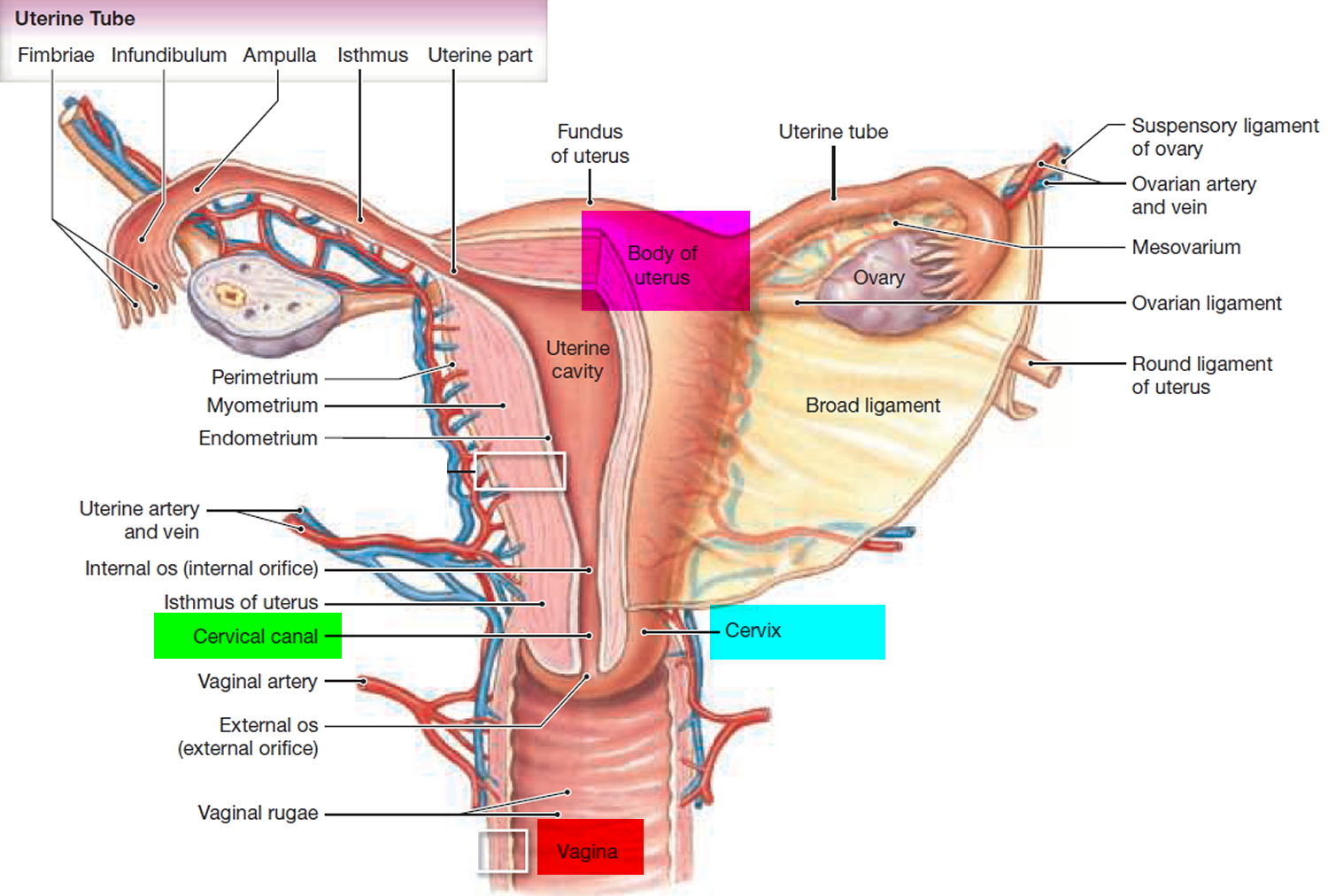
Figure 6. Cervical epithelium
Figure 7. Cervical Transformation Zone
Figure 8. Cervical Transformation Zone
Why might I need a LEEP?
LEEP may be done when cervical or vaginal problems are found during a pelvic exam, or abnormal cells are found during a Pap test. LEEP is also done to detect cancer of the cervix or vagina.
Cells that appear to be abnormal, but are not yet cancerous, may be called precancerous. These abnormal cells may be the first evidence of cancer that could develop years later.
LEEP may also be used to assist in the diagnosis or treatment of the following conditions:
- Polyps (benign growths)
- Genital warts, which may indicate infection with human papilloma virus (HPV), a risk factor for developing cervical cancer
- Diethylstilbestrol (DES) exposure in women whose mothers took DES during pregnancy, as DES exposure increases the risk for cancer of the reproductive system
Your healthcare provider may have other reasons to recommend LEEP.
What side effects should I expect after a LEEP procedure?
You can usually expect some bleeding and discharge for about three to four weeks after treatment. In order to help avoid any possible infections it is recommended that you only use sanitary towels during this time, avoiding tampons and sex, until any bleeding and discharge has settled. Every woman’s experience is different, so the amount and color of any bleeding/discharge can vary a lot depending on how quickly the woman heals, the size of the area treated and treatment method used. Some women start to get bleeding or discharge from the day the treatment is performed and for other women this is very slight or absent during the first week or so.
After treatment, a soft healing scab forms on the cervix. Over time this slowly dissolves away, which is what often causes the discharge and some bleeding. This can vary a lot from woman to women. The bleeding experienced can be red or brown in color and it can vary in heaviness from light spotting to slightly heavier bleeding. Sometimes the discharge can be a yellowy color, and it can be heavy or watery. Some women find that their next monthly period comes slightly earlier than normal and it may be slightly heavier. This is thought to be caused by the increased blood supply around this area.
All of the above symptoms are very normal after a LEEP procedure. However, if the bleeding seems particularly heavy (e.g. your sanitary towels are soaking every hour) or if the discharge smells really offensive and/or you feel unwell (which could be a sign of infection) you should contact a health care professional.
How do I prepare for LEEP?
- Your healthcare provider will explain the procedure and you can ask questions.
- You will be asked to sign a consent form that gives your permission to do the procedure. Read the form carefully and ask questions if something is not clear.
- Generally, no preparation, such as fasting or sedation, is needed.
- If you are pregnant or think you may be, tell your healthcare provider.
- Tell your healthcare provider if you are sensitive to or are allergic to any medicines, latex, tape, iodine, and anesthesia.
- Tell your healthcare provider of all medicines (prescribed and over-the-counter) and herbal supplements that you are taking.
- Tell your healthcare provider if you have a history of bleeding disorders or if you are taking any blood-thinning medicines (anticoagulants), aspirin, or other medicines that affect blood clotting. You may be told to stop these medicines before the procedure.
- Your healthcare provider will tell you not to use tampons, vaginal creams or medicine, douching, or having sex before the procedure.
- LEEP is usually done when you are not having your menstrual period.
- Your healthcare provider may recommend that you take a pain reliever 30 minutes before the procedure.
- You may want to bring a sanitary napkin to wear home after the procedure.
- Follow any other instructions your provider gives you to get ready.
How is LEEP performed?
LEEP may be done in a healthcare provider’s office, on an outpatient basis, or as part of your stay in a hospital. Procedures may vary depending on your condition and your healthcare provider’s practices.
A LEEP should be done when you are not having your menstrual period to give a better view of the cervix. In most cases, LEEP is done in a health care professional’s office. The procedure only takes a few minutes.
During the LEEP procedure you will lie on your back and place your legs in stirrups. The health care professional then will insert a speculum into your vagina in the same way as for a pelvic exam. Local anesthesia will be used to prevent pain. It is given through a needle attached to a syringe. You may feel a slight sting, then a dull ache or cramp. The loop is inserted into the vagina to the cervix. There are different sizes and shapes of loops that can be used. You may feel faint during the procedure. If you feel faint, tell your health care professional immediately.
After the LEEP procedure, a special paste may be applied to your cervix to stop any bleeding. Electrocautery also may be used to control bleeding. The tissue that is removed will be studied in a lab to confirm the diagnosis.
Generally, LEEP follows this process:
- You will be asked to undress completely or from the waist down and put on a hospital gown.
- You will be instructed to empty your bladder before the procedure.
- You will lie on an exam table, with your feet and legs supported as for a pelvic exam.
- Your healthcare provider will insert an instrument called a speculum into your vagina to spread the walls of the vagina apart to expose the cervix.
- Often, the healthcare provider will use a colposcope, an instrument with a special lens similar to a microscope, to magnify the tissues. The colposcope will be placed at the opening of your vagina but does not enter your vagina.
- Your healthcare provider will look through the colposcope to locate any areas for treatment on the cervix or in the vagina. Photographs with the colposcope or sketches of the areas on your cervix may be made for your healthcare record.
- Your cervix may be cleaned and soaked with a vinegar solution, also called acetic acid solution. This helps make the abnormal tissues turn white and become more visible. You may feel a mild burning sensation. An iodine solution is sometimes used to coat the cervix, called the Schiller test.
- The healthcare provider will numb the area using a small needle to inject medicine.
- A type of forceps, called a tenaculum, may be used to hold the cervix steady for the procedure. You may feel some cramping when the tenaculum is applied.
- You will hear humming and/or blowing sounds from the equipment.
- The LEEP wire will be inserted through the speculum and passed through the abnormal tissues. One or more passes may be needed. You may feel pressure or a slight cramping.
- Some women feel faint during the procedure. Tell your healthcare provider or the nurse if you have this feeling.
- It is very important that you lie still during the procedure.
- The amount and location of tissue removed depends on the whether LEEP is being used as a diagnostic tool, or to remove abnormal tissue. LEEP wires come in different sizes and shapes.
- The electrical current will seal the blood vessels, so usually there is very little bleeding. Any bleeding from the LEEP site may be treated with a paste-like topical medicine.
- The tissue will be sent to a lab for further testing.
LEEP procedure side effects and risks
Some possible complications of LEEP procedure may include:
- Infection
- Bleeding
- Changes or scarring in the cervix from removal of tissue
- Trouble getting pregnant
- Potential for preterm birth or having a low birth weight baby
- Incomplete removal of the abnormal cells
If you are allergic to or sensitive to medications, iodine, or latex, tell your healthcare provider.
If you are pregnant or think you could be, tell your healthcare provider.
There may be other risks depending on your condition. Be sure to discuss any concerns with your healthcare provider before the procedure.
The most common risk in the first 3 weeks after a LEEP is heavy bleeding. If you have heavy bleeding, contact your health care professional. You may need to have more of the paste applied to the cervix to stop it.
LEEP has been associated with an increased risk of future pregnancy problems. Although most women have no problems, there is a small increase in the risk of premature births and having a low birth weight baby. In rare cases, the cervix is narrowed after the procedure. This narrowing may cause problems with menstruation.
There may be other risks depending on your condition. Be sure to discuss any concerns with your healthcare provider before the procedure.
Certain factors or conditions may interfere with LEEP. These factors include:
- Menstruation
- Acute pelvic inflammatory disease (PID)
- Acute inflammation of the cervix
LEEP procedure recovery
After LEEP, you may rest for a few minutes after the procedure before going home.
After the LEEP procedure, you may have:
- a watery, pinkish discharge
- mild cramping
- a brownish-black discharge (from the paste used)
You may want to wear a sanitary pad for bleeding. It is normal to have some mild cramping, spotting, and dark or black-colored discharge for several days. The dark discharge is from the medicine applied to your cervix to control bleeding.
It will take a few weeks for your cervix to heal. While your cervix heals, you should not place anything in the vagina, you may be instructed not to douche, use tampons, or have sex for 4 weeks after LEEP, or for a period of time recommended by your healthcare provider. Your health care professional will tell you when it is safe to do so.
You may also have other limits on your activity, including no strenuous activity or heavy lifting.
Take a pain reliever for cramping or soreness as directed by your healthcare provider. Aspirin or certain other pain medicines may increase the chance of bleeding. Be sure to take only recommended medicines.
Your healthcare provider will tell you when to return for further treatment or care. Generally, women who have had LEEP will need more frequent Pap tests.
You should contact your health care professional if you have any of the following problems:
- Heavy bleeding (more than your normal period)
- Bleeding with clots
- Severe abdominal pain
- Foul-smelling drainage from your vagina
- Fever and/or chills
Your healthcare provider may give you other instructions after the procedure, depending on your particular situation.
Will I need follow-up visits?
After the LEEP procedure, you will need to see your health care professional for follow-up visits. You will have cervical cancer screening to be sure that all of the abnormal cells are gone and that they have not returned. If you have another abnormal screening test result, you may need more treatment.
You can help protect the health of your cervix by following these guidelines:
- Have regular pelvic exams and cervical cancer screening.
- Stop smoking—smoking increases your risk of cancer of the cervix.
- Limit your number of sexual partners and use condoms to reduce your risk of sexually transmitted infections (STIs).
LEEP procedure on pregnancy outcomes
Retrospective, case-control observations conclude that overly aggressive use of diagnostic excisional procedures may produce long-term adverse obstetric outcomes 17, 18, 19. Cold knife conization and LEEP are associated with a small increase in the risk of preterm labor and low birth weight 17, 19. The risk of preterm delivery increases if the depth of LEEP or laser conization is more than 10 mm 17. The value of cervical length measurements during pregnancy for predicting preterm labor in women with a history of cervical intraepithelial neoplasia (CIN) treatments is unknown 19. Laser vaporization and cryotherapy did not affect outcomes, supporting the theory that ablation removes less tissue than excision 19. According to absolute risks, previous treatment with LEEP would result in two perinatal deaths per 1,000 pregnancies 18. The small absolute risk of preterm labor following cervical excisional procedures must be balanced with the risk of untreated cervical intraepithelial neoplasia 3 (CIN 3) 19. None of the treatments affected fertility 17.
Recent research has looked at the risk of preterm labour (giving birth before 37 weeks of pregnancy) for women who have LEEP (Loop Electrosurgical Excisional Procedure) or large loop excision of the transformation zone (LLETZ) 20, 21. This has been found to be linked to how deep the excision (area of tissue that is remove) is, which depends on how large the area of abnormalities is. The research shows that if the LEEP (Loop Electrosurgical Excisional Procedure) excision is less than 10 mm deep, the risk of preterm labor is not significantly higher 20, 21.
However, excisions that are deeper than 10 mm or repeated LEEP procedures may significantly increase the risk of preterm labour, depending on the individual 21. This is because deeper excisions remove more of the cervix, which reduces its ability to perform its function during pregnancy – which is to help keep the foetus in the uterus until birth. Each woman’s cervix is different; some are shorter than others, which means that there are no set rules about the effect LEEP treatment might have on future pregnancy.
If you are currently pregnant or are thinking about getting pregnant in the future, and have concerns about a previous LEEP, please raise this with your care team. They will be able to offer advice and reassure you. If you have had a deep excision, or have had repeated LEEP procedures they wish to put a stitch, called a cervical stich, in your remaining cervix to support it during any future pregnancies.
Chances of cervical cancer after LEEP
The goals of excisional treatment are complete removal of the lesion and the transformation zone, resulting in interpretable margins 22. There are conflicting reports as to whether margin status predicts the risk of recurrent disease 9. Treatment failure can occur in women with clear or involved margins 23. Women with clear margins show a pooled prevalence of high-grade residual disease of 3% vs. 18% in women with involved or uncertain margins 22.
Most women with involved margins will not develop persistent or recurrent disease 9. Based on the lack of definitive data showing that margin status independently predicts residual disease, it is preferred that women with CIN 2/3 and positive endocervical margins undergo cytologic and endocervical sampling four to six months after treatment, rather than immediate retreatment 9. If a decision is made to retreat, repeat excision or hysterectomy is acceptable 9.
Human papillomavirus DNA testing
Human papillomavirus (HPV) DNA testing appears to be more sensitive than colposcopy or cytology for detecting treatment failures for cervical intraepithelial neoplasia (CIN) 2/3 24. One systematic review showed a sensitivity of nearly 77% for cytology and nearly 91% for human papillomavirus (HPV) DNA testing 25. In another systematic review of women who had successful treatment, 84% had negative human papillomavirus (HPV) DNA testing following LEEP 26. Women who tested negative for human papillomavirus (HPV) had no recurrent disease during a two-year follow-up period 27.
According to the American Society for Colposcopy and Cervical Pathology 9 and the American College of Obstetricians and Gynecologists 28, human papillomavirus (HPV) DNA testing is an acceptable option for post-LEEP management of CIN 2/3. HPV DNA testing and cytology (co-testing) should be performed posttreatment at 12 and 24 months 9. If either test result is positive, colposcopy with endocervical sampling is recommended 9. Women who have negative co-testing results twice can repeat co-testing in three years and return to routine screening if results are negative 9. The risk of neoplastic invasion has been reported as late as two decades after treatment 29, 30. The American Society for Colposcopy and Cervical Pathology recommends a 20-year period of routine follow-up screening 9.
- Martin-Hirsch PP, Paraskevaidis E, Bryant A, Dickinson HO, Keep SL. Surgery for cervical intraepithelial neoplasia. The Cochrane database of systematic reviews. 2010;(6):CD001318. doi:10.1002/14651858.CD001318.pub2. https://www.ncbi.nlm.nih.gov/pmc/articles/PMC4170911/[↩]
- Prendeville W, Cullimore J, Norman S. Large loop excision of the transformation zone (LLETZ): a new method of management for women with cervical intraepithelial neoplasia. British Journal of Obstetrics and Gynaecology 1989;96:1054. https://www.ncbi.nlm.nih.gov/pubmed/2804007[↩]
- Bigrigg MA, Codling BW, Pearson P, Read MD, Swingler GR. Colposcopic diagnosis and treatment of cervical dysplasia at a single visit. Experience of low-voltage diathermy loop in 1000 patients. Lancet 1990;336(8709):229-31 https://www.ncbi.nlm.nih.gov/pubmed/1973781[↩]
- Luesley D, Cullimore J, Redman C. Loop excision of the cervical transformation zone in patients with abnormal cervical smears. BMJ 1990;300:1690. https://www.ncbi.nlm.nih.gov/pmc/articles/PMC1663301/pdf/bmj00185-0030.pdf[↩]
- Whiteley P, Olah K. Treatment of cervical intraepithelial neoplasia: experience with low voltage diathermy loop. American Journal of Obstetrics and Gynecology 1990;162:1272. https://www.ncbi.nlm.nih.gov/pubmed/2339728[↩]
- Murdoch J, Grimshaw R, Morgan P, Monaghan J. The impact of loop diathermy on management of early invasive cervical cancer. International Journal of Gynecological Cancer 1992;2:129. https://www.ncbi.nlm.nih.gov/pubmed/11576247[↩]
- Wright TC Jr, Gagnon S, Richart RM, Ferenczy A. Treatment of cervical intraepithelial neoplasia using the loop electrosurgical excision procedure. Obstetrics and Gynecology 1992;79(2):173-8. https://www.ncbi.nlm.nih.gov/pubmed/1731281[↩]
- Martin-Hirsch PPL, Paraskevaidis E, Bryant A, Dickinson HO. Surgery for cervical intraepithelial neoplasia. Cochrane Database of Systematic Reviews 2013, Issue 12. Art. No.: CD001318. DOI: 10.1002/14651858.CD001318.pub3 http://cochranelibrary-wiley.com/doi/10.1002/14651858.CD001318.pub3/full[↩][↩][↩]
- Massad LS, Einstein MH, Huh WK, et al.; 2012 ASCCP Consensus Guidelines Conference. 2012 updated consensus guidelines for the management of abnormal cervical cancer screening tests and cancer precursors. J Low Genit Tract Dis. 2013;17(5 suppl 1):S1–S27.[↩][↩][↩][↩][↩][↩][↩][↩][↩][↩]
- Kyrgiou M, Tsoumpou I, Vrekoussis T, et al. The up-to-date evidence on colposcopy practice and treatment of cervical intraepithelial neoplasia: the Cochrane colposcopy & cervical cytopathology collaborative group (C5 group) approach. Cancer Treat Rev. 2006;32(7):516–523.[↩][↩]
- Castle PE, Kreimer AR, Wacholder S, et al. Influence of loop electrosurgical excision procedure on subsequent acquisition of new human papillomavirus infections. J Infect Dis. 2009;199(11):1612–1620.[↩]
- Martin-Hirsch PL, Paraskevaidis E, Bryant A, Dickinson HO, Keep SL. Surgery for cervical intraepithelial neoplasia. Cochrane Database Syst Rev. 2010;(6):CD001318.[↩][↩]
- Miroshnichenko GG, Parva M, Holtz DO, Klemens JA, Dunton CJ. Interpretability of excisional biopsies of the cervix: cone biopsy and loop excision. J Low Genit Tract Dis. 2009;13(1):10–12.[↩]
- Mitchell MF, Tortolero-Luna G, Cook E, Whittaker L, Rhodes-Morris H, Silva E. A randomized clinical trial of cryotherapy, laser vaporization, and loop electrosurgical excision for treatment of squamous intraepithelial lesions of the cervix. Obstet Gynecol. 1998;92(5):737–744.[↩]
- Nuovo J, Melnikow J, Willan AR, Chan BK. Treatment outcomes for squamous intraepithelial lesions. Int J Gynaecol Obstet. 2000;68(1):25–33.[↩]
- Gynecologic Procedures: Colposcopy, Treatment of Cervical Intraepithelial Neoplasia, and Endometrial Assessment. Am Fam Physician. 2013 Jun 15;87(12):836-843. https://www.aafp.org/afp/2013/0615/p836.html[↩]
- Kyrgiou M, Koliopoulos G, Martin-Hirsch P, Arbyn M, Prendiville W, Paraskevaidis E. Obstetric outcomes after conservative treatment for intraepithelial or early invasive cervical lesions: systematic review and meta-analysis. Lancet. 2006;367(9509):489–498.[↩][↩][↩][↩]
- Arbyn M, Kyrgiou M, Simoens C, et al. Perinatal mortality and other severe adverse pregnancy outcomes associated with treatment of cervical intraepithelial neoplasia: meta-analysis. BMJ. 2008;337:a1284.[↩][↩]
- Bevis KS, Biggio JR. Cervical conization and the risk of preterm delivery. Am J Obstet Gynecol. 2011;205(1):19–27.[↩][↩][↩][↩][↩]
- Castanon A et al., 2012. Risk of preterm birth after treatment for cervical intraepithelial neoplasia among women attending colposcopy in England: retrospective-prospective cohort study. British Medical Journal 345, e5174.[↩][↩]
- Castanon A et al, 2014. Risk of preterm delivery with increasing depth of excision for cervical intraepithelial neoplasia in England: nested case-control study. British Medical Journal 349, g6223.[↩][↩][↩]
- Ghaem-Maghami S, Sagi S, Majeed G, Soutter WP. Incomplete excision of cervical intraepithelial neoplasia and risk of treatment failure: a meta-analysis. Lancet Oncol. 2007;8(11):985–993.[↩][↩]
- Paraskevaidis E, Lolis ED, Koliopoulos G, Alamanos Y, Fotiou S, Kitchener HC. Cervical intraepithelial neoplasia outcomes after large loop excision with clear margins. Obstet Gynecol. 2000;95(6 pt 1):828–831.[↩]
- Arbyn M, Paraskevaidis E, Martin-Hirsch P, Prendiville W, Dillner J. Clinical utility of HPV-DNA detection: triage of minor cervical lesions, follow-up of women treated for high-grade CIN: an update of pooled evidence. Gynecol Oncol. 2005;99(3 suppl 1):S7–S11.[↩]
- Chan BK, Melnikow J, Slee CA, Arellanes R, Sawaya GF. Posttreatment human papillomavirus testing for recurrent cervical intraepithelial neoplasia: a systematic review. Am J Obstet Gynecol. 2009;200(4):422. e1–e9.[↩]
- Paraskevaidis E, Arbyn M, Sotiriadis A, et al. The role of HPV DNA testing in the follow-up period after treatment for CIN: a systematic review of the literature. Cancer Treat Rev. 2004;30(2):205–211.[↩]
- Kreimer AR, Guido RS, Solomon D, et al. Human papillomavirus testing following loop electrosurgical excision procedure identifies women at risk for posttreatment cervical intraepithelial neoplasia grade 2 or 3 disease. Cancer Epidemiol Biomarkers Prev. 2006;15(5):908–914.[↩]
- American College of Obstetricians and Gynecologists. ACOG Practice Bulletin number 66, September 2005. Management of abnormal cervical cytology and histology. Obstet Gynecol. 2005;106(3):645–664.[↩]
- Soutter WP, Sasieni P, Panoskaltsis T. Long-term risk of invasive cervical cancer after treatment of squamous cervical intraepithelial neoplasia. Int J Cancer. 2006;118(8):2048–2055.[↩]
- Kalliala I, Anttila A, Pukkala E, Nieminen P. Risk of cervical and other cancers after treatment of cervical intraepithelial neoplasia: retrospective cohort study. BMJ. 2005;331(7526):1183–1185.[↩]
